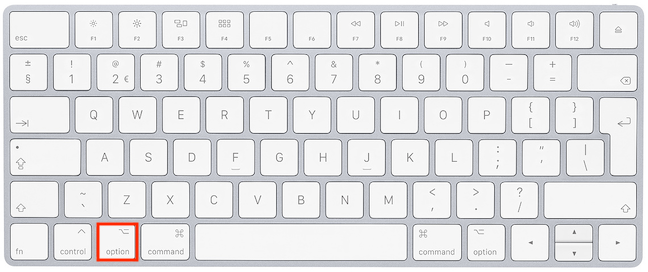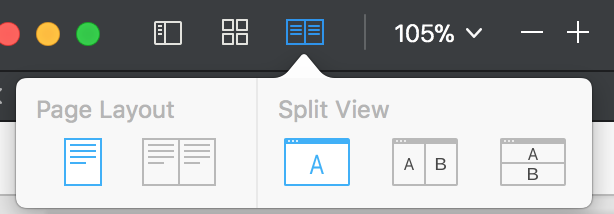Screen reader keyboard shortcuts > VoiceOver on a Mac
- Key On Mac Used For Text Document Navigation Pdf
- Key On Mac Used For Text Document Navigation Software
When a menu is open, you can use the up and down arrow keys to navigate it, and also the right and left arrow keys, respectively, to enter and leave sub-menus. This is good for general browsing — getting a feel for an app’s menus — but not for day-to-day work. If an item has a keyboard shortcut, use that to select it. NVDA shortcut keys. Note: Some keyboard shortcuts require using the NVDA modifier key. By default, both the Numpad Insert key and the Extended Insert key are set as NVDA modifier keys, but users can designate the Caps Lock key as an additional NVDA modifier key. In the tables below, the assumption is that the Insert key is being used as the.
Siri - With Siri on the Mac, you can use the personal digital assistant to look up information, add events to the calendar, set reminders, and a whole lot more. Notification Center - You can set widgets in Notification Center to provide quick access to things that matter the most to you, like the weather, your daily schedule, iTunes control. When you’re in this view, you navigate up and down using the arrow keys, and to enter a folder, or open a file, press the right-arrow key; to go back up a level, press the left-arrow key. While you move horizontally, remember that you’re actually moving up and down in the Finder hierarchy as you move left and right.
Also available in a single-page printer-friendly PDF version.
VoiceOver for macOS, first introduced in Mac OS X 10.4 in 2005, is a screen reader program that comes on new Mac computers. A variation of VoiceOver is also available on iPhones, iPads, and iPod touches.
Note:
VoiceOver works best with Safari. If you try to use it with any other browser, it may work for some things, but not as consistently as with Safari.
+
Keyboard Accessibility on a Mac
Keyboard accessibility is NOT enabled by default on a Mac. Your accessibility and screen reader test results will be inaccurate if you do not enable keyboard accessibility in the following two places:
- System Settings: Keyboard > Shortcuts > Full Keyboard Access > All controls
- Safari Settings: Advanced > Accessibility > Press Tab to highlight each item on a webpage.
The basics

Command + F5 starts the VoiceOver program. VoiceOver uses the Control and Option keys before each command. The combination is referred to as VO in the tables. The VO keys can be locked so that they do not need to be pressed to perform VoiceOver commands by pressing VO + ;.
| Task | Command |
|---|---|
| Start (or stop) VoiceOver | Command + F5 |
| VoiceOver Activation keys (or VO keys) | Control + Option (referenced as VO) |
| Lock (or unlock) VO keys | VO + ; |
| Open rotor (see explanation below) | VO + U |
| Task | Command |
|---|---|
| Start reading | VO + A |
| Stop reading | Control |
| Read next item | VO + Right Arrow |
| Read previous item | VO + Left Arrow |
| Read paragraph | VO + P |
| Read sentence | VO + S |
| Read word (press W multiple times to spell words alphabetically and phonetically) | VO + W |
| Read from top to current location | VO + B |
| Jump to top of page (using desktop keyboards) | VO + Home |
| Jump to top of page (using laptop keyboards) | VO + Fn + Left Arrow |
| Jump to bottom of page (using desktop keyboards) | VO + End |
| Jump to bottom of page (using laptop keyboards) | VO + Fn + Right Arrow |
| Navigate table cells | VO + Arrow Keys ( or or or ) |
| Select speech setting option (speaking rate, voice, pitch, etc.) | VO + Command + Right Arrow / Left Arrow |
| Modify the selected speech setting | VO + Command + Up Arrow / Down Arrow |
Navigation
The following shortcuts will help you navigate common page elements. You can press the Shift key with these commands to move to the previous occurrence.
| Task | Command |
|---|---|
| Go to next/previous focusable item (link, button, input, etc.) | Tab / Shift + Tab |
| Next link | VO + Command + L |
| Next visited link | VO + Command + V |
| Next heading | VO + Command + H |
| Next form control | VO + Command + J |
| Next table | VO + Command + T |
| Next list | VO + Command + X |
| Next graphic | VO + Command + G |
| Activate a link or form control | VO + Space Bar |
| Go to previous (heading, table, etc.) | VO + Shift + Command + (H, T, etc.) |
| Interact with (go into/out of) objects (like iframes, menus, application regions, etc.) | VO + Shift + Down Arrow / Up Arrow |
The rotor
The VoiceOver 'rotor' feature helps users to do some frequently performed navigation actions quickly and easily.

Open the rotor by pressing VO + U, then use the Left Arrow and Right Arrow keys to choose between Tables, Frames, Images, Headers (heading elements), Links, Auto Web Spots (automatically generated list of structural and significant items on the page), Form controls, Web spots (user-identified page areas), Visited links, and Non-visited links. Once a page element type is selected, use the Up Arrow and Down Arrow to select a particular element and Enter to activate it. Escape exits the rotor.
Within the rotor, you can begin typing to filter the available elements. For example, with the Headers rotor open, pressing '2' will filter to second level headings. Typing 'nav' will filter to the headings that contain those characters.
Data tables

Key On Mac Used For Text Document Navigation Pdf
You can navigate tables in text areas by row and column, and sort by column.
| Task | Command |
|---|---|
| Read column header | VO + C |
| Read row from VO cursor location to end of row | VO + R |
| Read column from VO cursor location to bottom of column | VO + R + C |
| Move up or down in a column | Up Arrow or Down Arrow |
| Move across a row | Left Arrow or Right Arrow |
Additional resources
Key On Mac Used For Text Document Navigation Software
Apple provides VoiceOver user information at www.apple.com/voiceover/info/guide/.
